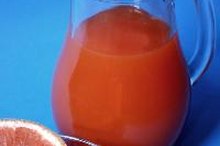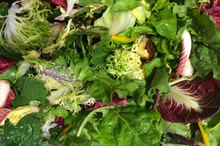What does fact checked mean?
At Healthfully, we strive to deliver objective content that is accurate and up-to-date. Our team periodically reviews articles in order to ensure content quality. The sources cited below consist of evidence from peer-reviewed journals, prominent medical organizations, academic associations, and government data.
The information contained on this site is for informational purposes only, and should not be used as a substitute for the advice of a professional health care provider. Please check with the appropriate physician regarding health questions and concerns. Although we strive to deliver accurate and up-to-date information, no guarantee to that effect is made.
Potassium Levels in Wine
Human cells rely on the right balance of potassium both inside and outside, and a correct balance promotes normal nerve, muscle and heart function.While fruits and vegetables are among the top sources of potassium, wine, including red and white, supplies small amounts of potassium, as well.
Where the Potassium Comes From
Much of the potassium in wine comes from the potassium in the soil where grapevines are grown.As the vines grow, they absorb the potassium in the soil.In fact, many grape farmers add potassium to the soil because it can produce a larger crop of wine grapes. The potassium sorbate used to preserve certain types of wine can increase the potassium content a bit as well, according to the University of Minnesota.
- Much of the potassium in wine comes from the potassium in the soil where grapevines are grown.
Decreases in Potassium Content
Red Cherries & Potassium
Learn More
酿酒过程直接影响μch of the potassium is retained in the alcoholic beverage. Certain processes, such as:
- ion exchange in which potassium is exchanged for sodium
- decreases the amount of potassium in the beverage
- according to Ronald S
Jackson
author of "Wine Science: Principles
Applications." Removing potassium ions helps prevent crystallization, Jackson notes2.
Potassium in Red Wine
A 5-ounce glass of the average red table wine contains 187 milligrams of potassium. That translates to about 4 percent of the 4,700 milligrams potassium healthy adults need daily. The same amount of Merlot also contains 187 milligrams of potassium.The skins of grapes aren't removed when making red wines, which is one contributor to the potassium levels.Red sweet wines contain slightly less potassium than traditional red wines.
- A 5-ounce glass of the average red table wine contains 187 milligrams of potassium.
Potassium in White Wine
High Blood Pressure and Meat & Seafood
Learn More
A 5-ounce serving of the average white table wine contains less potassium than red wine with 104 milligrams, or 2 percent of the daily 4,700-milligram recommendation for adults.The same amount of Chardonnay also contains 104 milligrams of potassium, and a white sweet dessert wine contains 135 milligrams per serving. White wine can be processed differently than red wine, which is one reason the potassium level in white wines is lower. Many white wines are chilled, and the chilling process can influence potassium, too, according to Jackson.
- A 5-ounce serving of the average white table wine contains less potassium than red wine with 104 milligrams, or 2 percent of the daily 4,700-milligram recommendation for adults.
- The same amount of Chardonnay also contains 104 milligrams of potassium, and a white sweet dessert wine contains 135 milligrams per serving.
Related Articles
References
- Linus Pauling Institute: Potassium
- Wine Science: Principles and Applications; Ronald S. Jackson
- USDA National Nutrient Database: Alcoholic Beverage, Wine, Table, Red
- USDA National Nutrient Database: Alcoholic Beverage, Wine, Table, Red, Merlot
- USDA National Nutrient Database: Alcoholic Beverage, Wine, Dessert, Sweet
- USDA National Nutrient Database: Alcoholic Beverage, Wine, Table, White
- USDA National Nutrient Database: Alcoholic Beverage, Wine, Table, White, Chardonnay
- Potassium. Office of Dietary Supplements. National Institutes of Health
- Lambert H, Frassetto L, Moore JB, et al. The effect of supplementation with alkaline potassium salts on bone metabolism: a meta-analysis. Osteoporos Int. 2015;26(4):1311-8. doi:+10.1007/s00198-014-3006-9
- Chatterjee R, Slentz C, Davenport CA, et al. Effects of potassium supplements on glucose metabolism in African Americans with prediabetes: a pilot trial. Am J Clin Nutr. 2017;106(6):1431-1438. doi:10.3945/ajcn.117.161570
- Potassium. Fact Sheet for Consumers. Office of Dietary Supplements. National Institutes of Health
- Health Claim Notification for Potassium Containing Foods. US Food and Drug Administration
- Aburto NJ, Hanson S, Gutierrez H, Hooper L, Elliott P, Cappuccio FP. Effect of increased potassium intake on cardiovascular risk factors and disease: systematic review and meta-analyses. BMJ 2013;346:f1378.
- Academy of Nutrition and Dietetics. What Is Potassium?
- ConsumerLab.com. Potassium Supplements Review.
- Curhan GC, Willett WC, Rimm EB, Stampfer MJ. A prospective study of dietary calcium and other nutrients and the risk of symptomatic kidney stones. N Engl J Med 1993;328:833-8.
- Curhan GC,威利•WC, Speizer FE, Spiegelman D Stampfer MJ. Comparison of dietary calcium with supplemental calcium and other nutrients as factors affecting the risk for kidney stones in women. Ann Intern Med 1997;126:497-504.
- D’Elia L, Barba G, Cappuccio FP, Strazzullo P. Potassium intake, stroke, and cardiovascular disease a meta-analysis of prospective studies. J Am Coll Cardiol 2011;57:1210-9.
- O’Neil C, Keast D, Fulgoni V, and Nicklas T. Food sources of energy and nutrients among adults in the US: NHANES 2003-2006. Nutrients. 2012;4:2097-120. DOI: 10.3390/nu4122097.
- Stone M, Martyn L, and Weaver C. Potassium intake, bioavailability, hypertension, and glucose control. Nutrients. 2016;8: E444. DOI: 10.3390/nu8070444.
- U.S. Food and Drug Administration. Health Claim Notification for Potassium Containing Foods.
- Weaver CM. Potassium and health. Adv Nutr 2013;4:368S-77S.
- Yong Sun, et al. Dietary potassium regulates vascular calcification and arterial stiffness. JCI Insight. 2017;2(19):e94920.
Writer Bio
Sara Ipatenco has taught writing, health and nutrition. She started writing in 2007 and has been published in Teaching Tolerance magazine. Ipatenco holds a bachelor's degree and a master's degree in education, both from the University of Denver.









